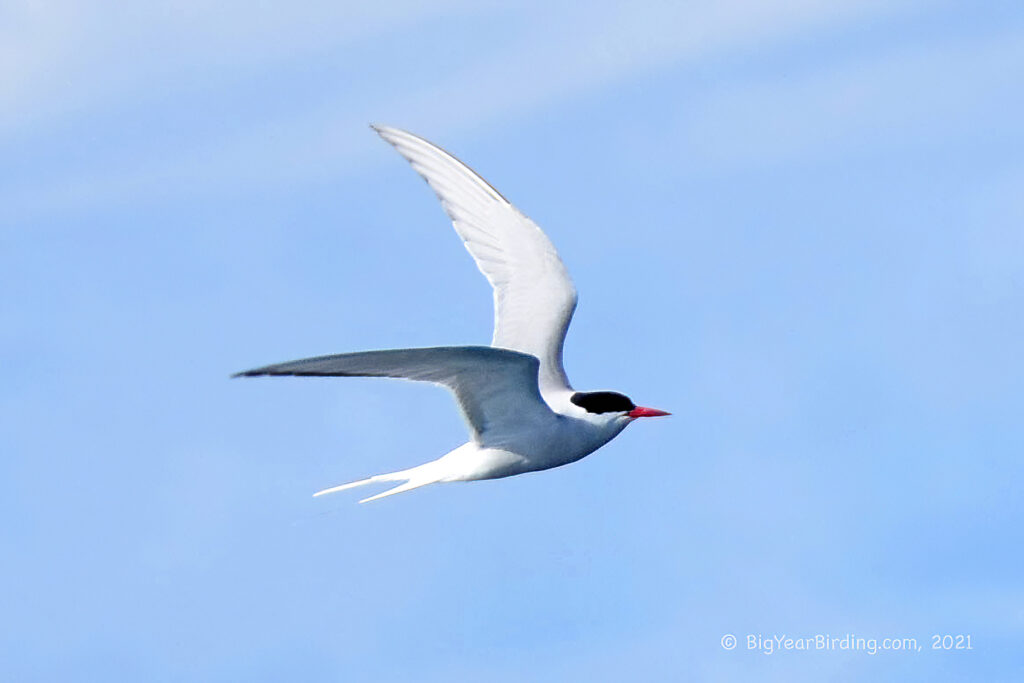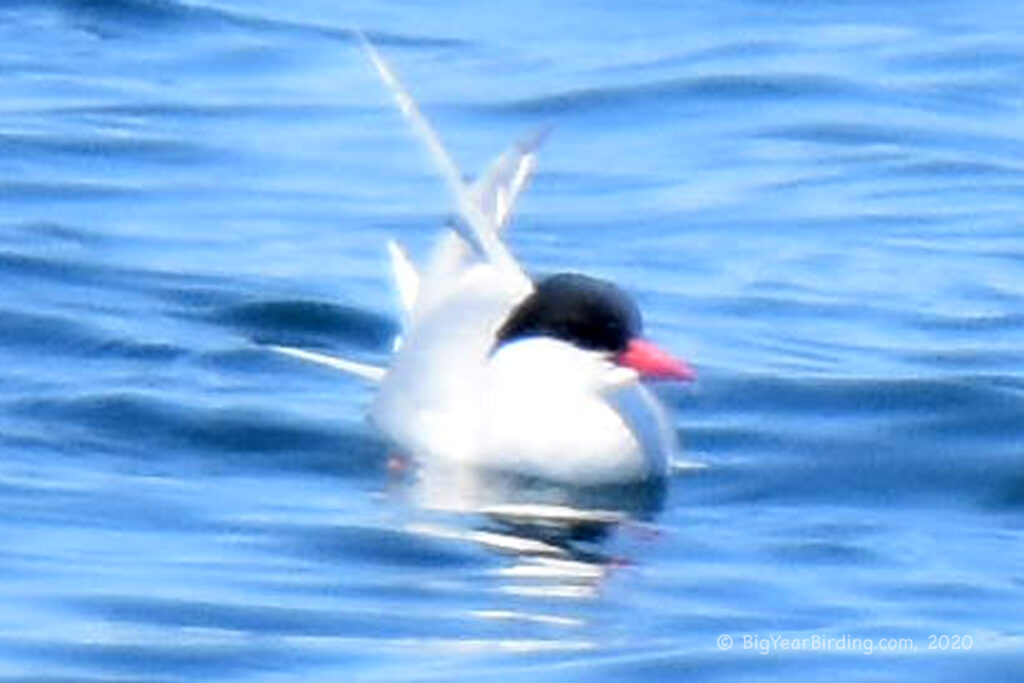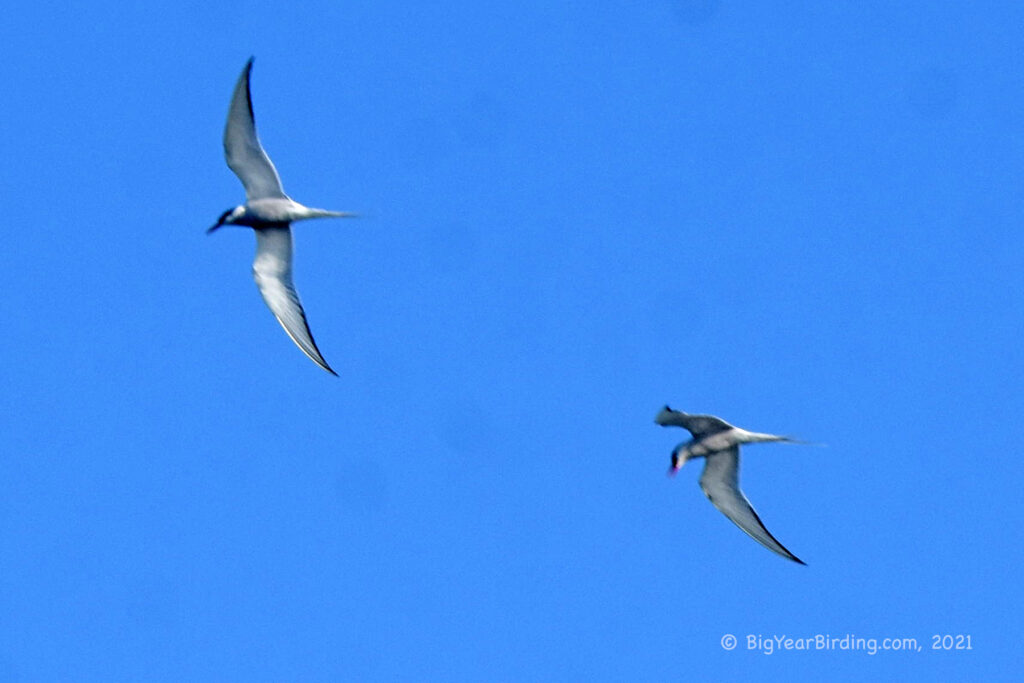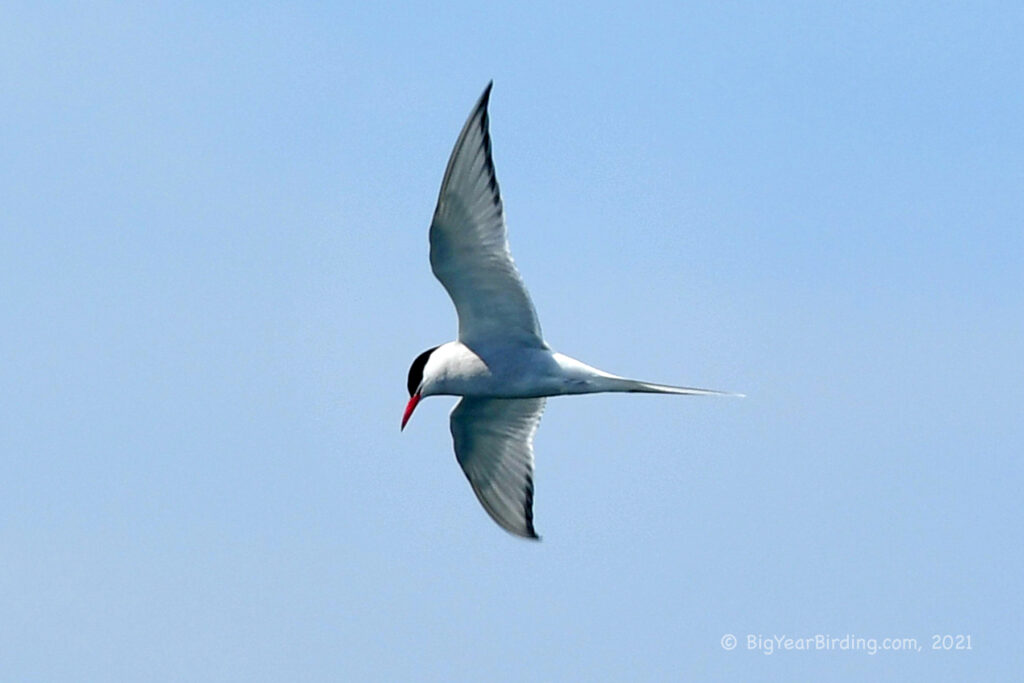The Arctic Tern (Sterna paradisaea) is a migratory bird with the longest migration of any bird species in the world. Measuring about 14-17 inches in length and weighing around 3.5-4.6 ounces, the Arctic Tern has a sleek and slender body, with a forked tail and long, pointed wings. Its plumage is predominantly white, with a black cap and a distinctive red bill.

During the breeding season, the Arctic Tern can be found in the Arctic and subarctic regions of the world, including Alaska, Canada, and northern Europe. It breeds in colonies on rocky islands or coasts, often in close proximity to other seabirds. In the winter, the Arctic Tern migrates to the Southern Hemisphere, flying an average of 44,000 miles round-trip.
The Arctic Tern’s migration pattern is characterized by a zigzag flight path, following a circuitous route that takes it across the Atlantic and Pacific Oceans. During the migration, the Arctic Tern can be found feeding on small fish, squid, and crustaceans. It is also known to scavenge on dead animals and other debris floating on the ocean’s surface.
The Arctic Tern is known for its aggressive defense of its nest and territory, often dive-bombing predators or intruders with its sharp bill. Its vocalizations include a variety of calls and alarm notes, often used to communicate with its mate or offspring.

Despite being a widely distributed species, the Arctic Tern is facing threats from habitat loss, climate change, and pollution. Conservation efforts are underway to protect the Arctic Tern’s breeding and foraging habitats, as well as to reduce other threats such as oil spills and overfishing.


